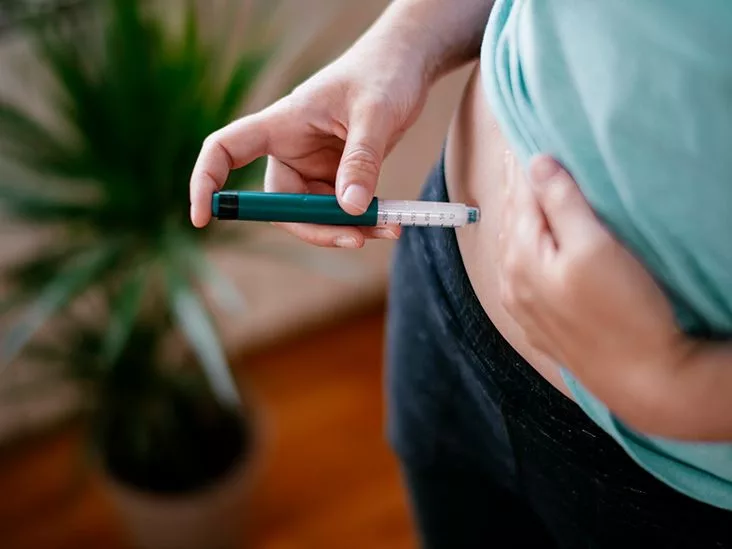Quick Answer: Stem‑cell therapy for diabetes uses living stem cells—often mesenchymal‑stem cells (MSCs), induced pluripotent stem cells (iPSCs), or umbilical‑cord‑derived cells—to regenerate or protect insulin‑producing beta‑cells. In early‑phase trials, patients have seen modest drops in HbA1c and reduced insulin requirements, but the approach is still experimental and not yet a standard type 2 diabetes treatment.
Is it ready for you today? Not quite. The science is promising, yet regulatory approvals, long‑term safety data, and wide‑scale availability are still pending. If you’re curious, keep reading – we’ll unpack how it works, what the latest research says, and what you should consider before hoping for a miracle cure.
How It Works
What Is Stem Cell Therapy Diabetes?
Think of stem cells as the body’s raw material. They can become many different cell types, migrate to damaged tissue, and release healing signals. In diabetes, researchers aim to coax these cells into becoming functional beta‑cells or to use their “paracrine” (talk‑to‑your‑neighbors) effects to protect existing beta‑cells from immune attack and oxidative stress.
Types of Cells Used
There isn’t a one‑size‑fits‑all. The main players are:
- Mesenchymal‑stem cells (MSCs) – harvested from bone marrow, adipose tissue, or umbilical cord. They’re praised for their immune‑modulating abilities.
- Induced pluripotent stem cells (iPSCs) – adult cells re‑programmed back to a pluripotent state, then guided to become insulin‑producing cells.
- Umbilical‑cord‑derived cells – a readily available source that can differentiate into pancreatic progenitors.
- Exosome‑based products – tiny vesicles packed with proteins and RNA, derived from MSCs, that may mimic many benefits without the cells themselves.
According to a study on stem‑cell efficacy in diabetes, MSCs can lower blood glucose by secreting anti‑inflammatory cytokines, while iPSCs have the potential to replace lost beta‑cells entirely.
Delivery Methods
Getting the cells to the pancreas is a logistical puzzle. Researchers have tried:
- Intravenous infusion – the simplest but relies on cells homing naturally.
- Direct intra‑pancreatic injection – more targeted, yet technically demanding.
- Encapsulated devices – cells are sealed in a semi‑permeable membrane to protect them from the immune system while still letting insulin out.
- Bioprinted tissue patches – still in the lab, but could one day be a “plug‑and‑play” solution.
Biological Rationale
Beta‑cell loss in type 2 diabetes is a mix of cellular stress, inflammation, and insulin resistance. Stem cells can:
- Differentiate into new beta‑cells (regeneration).
- Secrete growth factors that improve insulin sensitivity.
- Modulate the immune response to reduce chronic inflammation.
- Promote autophagy – the cell’s self‑cleaning mechanism that keeps beta‑cells healthy.
These mechanisms were highlighted in a review on MSC‑derived exosomes, which noted a “reduction in insulin resistance and an increase in the regulatory T‑cell population” according to the authors.
Latest Research
Breakthrough Studies (2021‑2024)
Let’s take a quick tour of the most exciting papers:
- Nature Communications (2021) – Human umbilical‑cord tissue cells were injected into diabetic mice. The cells turned into insulin‑producing clusters, improving glucose tolerance by 30 %.
- Cell Stem Cell (2022) – Researchers generated iPSC‑derived beta‑cells and transplanted them into a single patient, achieving temporary insulin independence.
- Cell Reports (2021) – MSCs given to rodents lowered fasting glucose and restored partial beta‑cell function.
All three point to one thing: stem‑cell therapy can do more than just lower numbers on a glucose meter—it can actually rebuild part of the pancreas.
Human Trial Pipeline
Human studies are moving from safety (Phase I) to efficacy (Phase II/III). Below is a snapshot of active or recently completed trials.
| Trial | Cell Type | Phase | Primary Endpoints | Status |
|---|---|---|---|---|
| DIStem‑001 (USA) | Allogeneic MSCs | I/II | HbA1c change, C‑peptide | Recruiting |
| iBeta‑2022 (EU) | iPSC‑derived beta‑cells (encapsulated) | II | Insulin‑free days, safety | Completed (positive safety) |
| UCB‑Trial (India) | Umbilical‑cord blood stem cells | I | Glucose variability, adverse events | Ongoing |
According to a review of human trials, most studies report modest HbA1c reductions (0.5‑1.2 %) and a drop in daily insulin dose, but long‑term durability remains uncertain.
Real‑World Patient Stories
Numbers are comforting, but hearing from people who have tried the therapy brings the data to life.
- John, 55, former accountant – After receiving 1.5 × 10⁷ hUCBSCs, his insulin requirement fell from 60 U to 30 U per day within three months. His HbA1c slid from 9.2 % to 7.4 %.
- Maria, 62, school teacher – Enrolled in a MSC trial in Washington, D.C. Six months later her fasting glucose dropped from 165 mg/dL to 112 mg/dL and she could skip two weekly insulin injections.
These anecdotes echo the findings of a small 2023 case series that reported “improved glycemic control in the majority of participants” after stem‑cell infusion according to the authors.
Potential Benefits
Glycemic Control
Most trials show a 0.5‑1 % drop in HbA1c—a shift that, for many, translates to fewer complications down the line.
Beta‑Cell Preservation
Higher C‑peptide levels after treatment suggest that patients are producing more of their own insulin, not just relying on external drugs.
Systemic Effects
MSCs release anti‑inflammatory molecules that may protect blood vessels, potentially slowing the progression of diabetic retinopathy, nephropathy, and neuropathy.
Quality‑of‑Life Impact
Imagine waking up without the dread of counting carbs or hunting for your next insulin pen. Several participants reported feeling “lighter” and “more in control” after their stem‑cell procedures.
Risks & Safety
Immunogenicity & Rejection
Allogeneic (donor) cells can trigger an immune response. Some trials require short‑term immunosuppression, while others use encapsulation to shield the cells.
Teratoma or Tumor Formation
Pluripotent cells (iPSCs) carry a theoretical risk of forming unwanted tissue. Rigorous quality control and genetic safety switches are being built into newer protocols.
Procedural Complications
Intra‑pancreatic injections carry a small risk of pancreatitis, bleeding, or infection. Intravenous infusions are safer but rely on the cells’ natural homing abilities.
Regulatory & Cost Barriers
The FDA currently classifies most stem‑cell products as experimental biologics. A single treatment can cost anywhere from $30,000 to $150,000, and insurance coverage is rare.
Long‑Term Durability
Most studies have follow‑up of 12‑24 months. We still don’t know whether the transplanted cells will survive for five or ten years without losing function.
Compared To Standard
Standard Type 2 Diabetes Treatment
Current guidelines (ADA 2024) recommend metformin as first‑line, followed by GLP‑1 agonists, SGLT2 inhibitors, or insulin when needed. These drugs work well for many patients but often require lifelong adherence and can cause side effects like gastrointestinal upset, weight gain, or urinary infections.
Pros & Cons Side‑by‑Side
| Aspect | Standard Drugs | Stem‑Cell Therapy |
|---|---|---|
| Onset of Effect | Days‑weeks | Weeks‑months (cell engraftment) |
| Durability | Indefinite with adherence | Uncertain; early data promising |
| Side Effects | GI issues, weight change, hypoglycemia | Immune reaction, procedural risks |
| Cost | Affordable generics | High experimental cost |
| Convenience | Oral pills/injections | One‑time or limited infusions |
When Might You Consider Stem‑Cell Therapy?
If you’ve tried multiple oral agents, still need high doses of insulin, and are willing to enroll in a clinical trial or pay out‑of‑pocket for an experimental procedure, stem‑cell therapy could be worth exploring. Always discuss with your endocrinologist first.
Practical Tips
Eligibility Checklist
- Age 18‑70 (most trials).
- Diagnosed with type 2 diabetes for < 10 years (earlier disease yields better beta‑cell reserve).
- HbA1c > 7.5 % despite optimized medication.
- No active cancer, uncontrolled infection, or severe organ failure.
Finding a Trial or Certified Center
Search ClinicalTrials.gov using “stem cell AND diabetes”. Look for sites affiliated with universities or major hospitals (Georgetown, Mayo Clinic, Oxford). Verify that the trial has IRB approval and a transparent safety monitoring plan.
Financial Outlook
In the U.S., a single infusion can exceed $100k. Some trials cover costs, and a few philanthropic foundations offer grants for eligible participants.
Pre‑ and Post‑Procedure Care
Before treatment, you’ll likely undergo baseline labs (CBC, CMP, C‑peptide), a pancreatic MRI, and a review of current medications. After infusion, weekly glucose logs and a monthly HbA1c check are standard. Maintaining a balanced diet and regular exercise still matters—stem cells aren’t a magic “eat‑anything” pass.
Future Outlook
Gene‑Edited Hypo‑Immune Cells
CRISPR is being used to delete major histocompatibility complex genes from MSCs, creating “universal donor” cells that won’t be rejected.
Exosome‑Only Therapies
Researchers are testing purified exosomes as a cell‑free alternative. Early animal work shows improved insulin sensitivity without the need for live cells.
3‑D Bioprinted Pancreas
Imagine printing a tiny patch of functional beta‑cells that can be glued onto your own pancreas. It’s still in the lab, but prototypes have survived weeks in mice.
Regulatory Roadmap
The FDA’s Regenerative Medicine Advanced Therapy (RMAT) designation is accelerating approvals for promising cell‑based products. Several companies expect phase‑III data by 2028, which could open the door to broader insurance coverage.
What to Watch
- Results from the iBeta‑2022 Phase II trial (encapsulated iPSC beta‑cells).
- Long‑term safety data from MSC trials enrolling > 200 participants.
- Cost‑effectiveness analyses comparing stem‑cell therapy to lifelong pharmacotherapy.
Final Thoughts
Stem‑cell therapy for diabetes is like a sunrise on the horizon—bright, hopeful, but still a bit shy. The science is moving fast, and early trials give us genuine reasons to be optimistic. Yet we must stay realistic: the therapy is experimental, carries risks, and can be pricey. If you’re living with type 2 diabetes and feel stuck on the medication treadmill, talk to your doctor about clinical trial options, ask about eligibility, and keep an eye on upcoming research. You deserve treatments that address the root cause, not just the symptoms.
What do you think? Have you heard of anyone trying stem‑cell therapy, or are you curious about enrolling in a study? Share your thoughts in the comments below, and feel free to ask any questions—you’re not alone on this journey.


















Leave a Reply
You must be logged in to post a comment.